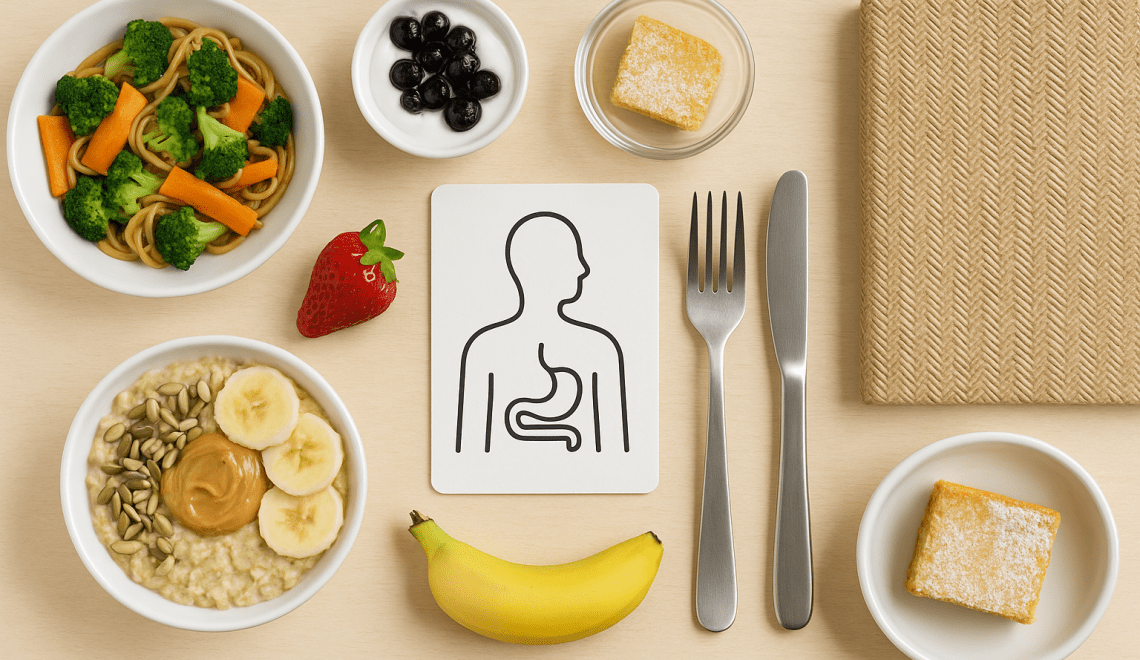
Intuitive eating is gaining momentum as people search for sustainable alternatives to restrictive diets. But what is intuitive eating, and does it really work? In this guide, we’ll break down what intuitive eating means, how it differs from traditional dieting, and whether it can be an effective approach to long-term health and wellbeing.
What Is Intuitive Eating?
Intuitive eating is a non-diet approach to health that focuses on rebuilding trust between you and your body. Rather than following strict rules about what or when to eat, intuitive eating encourages you to tune into your internal hunger and fullness cues.
It was developed by dietitians Evelyn Tribole and Elyse Resch and has since gained a strong following. Their book Intuitive Eating: A Revolutionary Anti-Diet Approach remains a cornerstone for anyone exploring this method.
Key Principles of Intuitive Eating:
- Reject the diet mentality – Let go of rigid food rules and weight loss obsessions.
- Honour your hunger – Eat when you’re hungry, not according to the clock or calorie targets.
- Make peace with food – No food is off-limits or “bad”.
- Challenge the food police – Ditch guilt or shame around eating choices.
- Respect your fullness – Learn to stop eating when you feel satisfied.
- Discover the satisfaction factor – Enjoying your food is important!
- Cope with emotions without using food – Find alternative coping strategies.
- Respect your body – Accept your unique body shape and size.
- Exercise for well-being, not weight loss – Move your body in ways that feel good.
- Honour your health with gentle nutrition – Focus on balance, not perfection.
This philosophy contrasts sharply with traditional UK dieting culture, where calorie counting, “syns”, or restrictive meal plans dominate.
For a professional breakdown of these principles, check the British Dietetic Association’s position on intuitive eating.
Intuitive Eating vs Traditional Dieting: A Real-Life UK Perspective
To better understand intuitive eating vs dieting, consider this real-world example:
Emily from Manchester, age 34:
“I spent years bouncing between Slimming World and calorie counting apps. I lost weight initially, but I always gained it back—and then some. I felt guilty all the time, even for eating a banana! Discovering intuitive eating was a revelation. Now, I eat without guilt, and my mental health has improved massively.”
Unlike traditional diets that promote restriction and control, intuitive eating focuses on mental and emotional health. A 2021 systematic review published in the Journal of the Academy of Nutrition and Dietetics found that intuitive eating is associated with better psychological health and lower disordered eating patterns.
Mindful Eating vs Intuitive Eating: What’s the Difference?
Mindful eating and intuitive eating are often used interchangeably, but they serve different purposes.
| Mindful Eating | Intuitive Eating |
|---|
| Focuses on being present during meals | Emphasises overall body trust and long-term freedom from diets |
| Encourages slow eating and awareness of taste and texture | Includes principles like emotional eating, body respect, and rejecting diet culture |
| Often used as a tool within diets | Intentionally non-diet and anti-restriction |
Mindfulness is a useful tool in intuitive eating, helping individuals slow down and become aware of their internal cues. The NHS Mindfulness guide offers more on how mindful techniques can support overall health.
Does Intuitive Eating Work?
If your goal is long-term weight loss:
Intuitive eating isn’t about shrinking your body. It’s weight-neutral and focuses on health-promoting behaviours rather than numbers on a scale. Weight may stabilise, increase, or decrease as your body finds its natural balance.
If your goal is improved well-being:
Research supports intuitive eating for:
- Better body image and self-esteem
- Reduced binge eating and food guilt
- Improved cardiometabolic markers (blood pressure, cholesterol)
- Lower levels of stress and disordered eating
For UK-specific health guidance, the charity BEAT Eating Disorders highlights how non-diet approaches can benefit people recovering from disordered eating patterns.
Creating an Intuitive Eating Plan
There’s no one-size-fits-all intuitive eating plan, but you can ease into it with structured flexibility. The key is listening to your hunger and fullness signals and making food choices that feel good—without judgement. Here’s what an intuitive eating plan might look like:
Sample Day (Balanced and Flexible)
- Breakfast: Porridge with banana, peanut butter, and seeds
- Lunch: Jacket potato with beans, salad, and grated cheese
- Snack: Slice of cake and tea, eaten mindfully
- Dinner: Stir-fry with noodles, tofu, and mixed veg
- Evening snack (if hungry): Yogurt with berries
The key? Every choice is made based on hunger, satisfaction, and how food makes you feel—not guilt or restriction.
You can find more inspiration from UK-based nutritionists like Laura Thomas PhD (external link), an intuitive eating registered nutritionist in London.
Should You Try Intuitive Eating?
If you’re tired of dieting, calorie counting, and food guilt, intuitive eating offers a sustainable, compassionate alternative. It’s about trusting your body, making peace with food, and supporting your overall health. It’s not a quick fix, but many people are finding that tuning into their bodies—not rules—leads to a more sustainable and joyful way to eat.
💡 Remember: Health isn’t just about weight. Intuitive eating puts you back in control and promotes long-term well-being.
Frequently Asked Questions on Intuitive Eating
Is intuitive eating suitable for weight loss?
Not directly. Intuitive eating is weight-neutral, meaning it’s about health, not shrinking your body.
Can I follow intuitive eating with diabetes or another condition?
Yes, but work with a registered dietitian. Gentle nutrition is key to managing health conditions without dieting.





